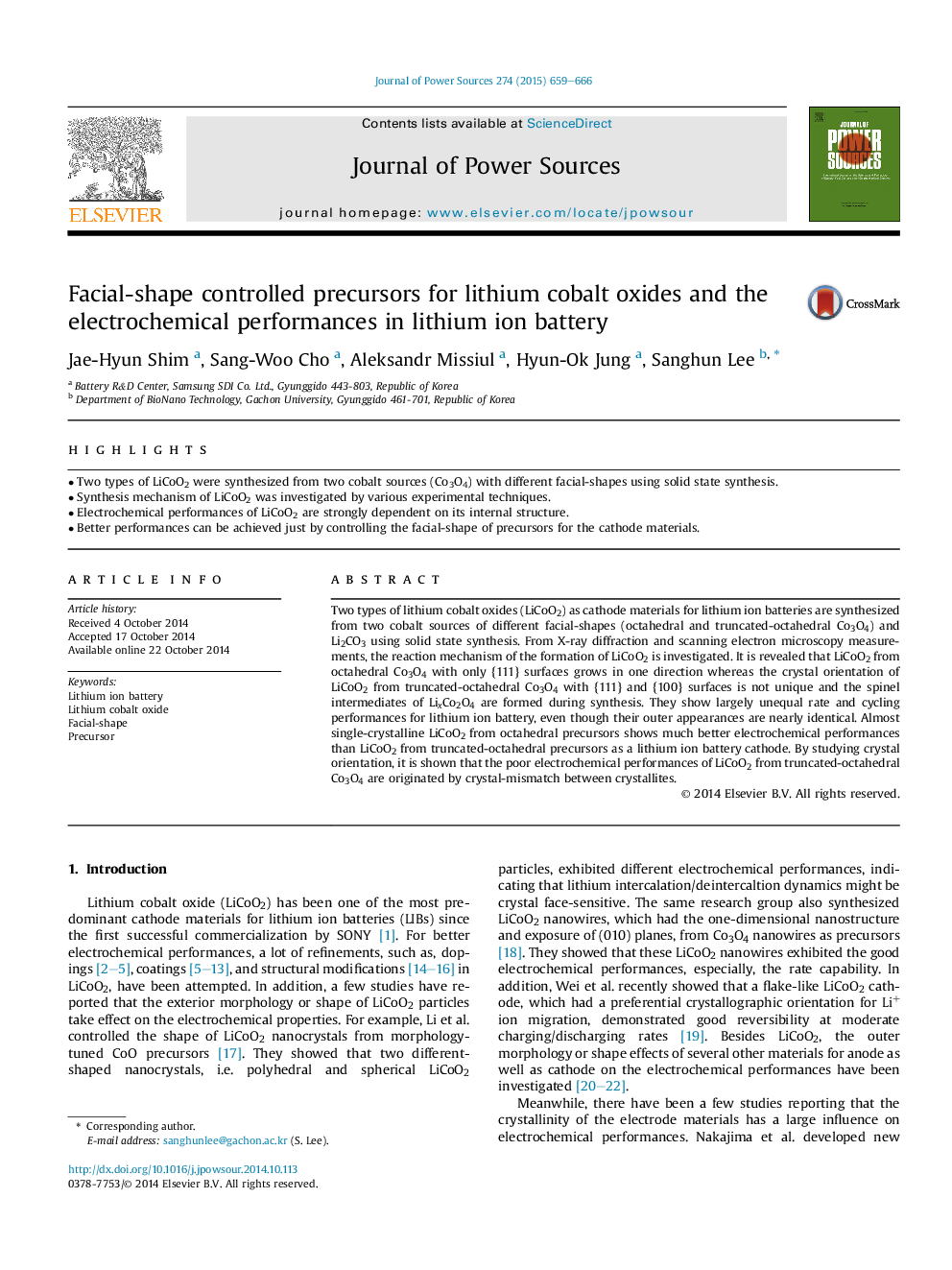| Article ID | Journal | Published Year | Pages | File Type |
|---|---|---|---|---|
| 7734990 | Journal of Power Sources | 2015 | 8 Pages |
Abstract
Two types of lithium cobalt oxides (LiCoO2) as cathode materials for lithium ion batteries are synthesized from two cobalt sources of different facial-shapes (octahedral and truncated-octahedral Co3O4) and Li2CO3 using solid state synthesis. From X-ray diffraction and scanning electron microscopy measurements, the reaction mechanism of the formation of LiCoO2 is investigated. It is revealed that LiCoO2 from octahedral Co3O4 with only {111} surfaces grows in one direction whereas the crystal orientation of LiCoO2 from truncated-octahedral Co3O4 with {111} and {100} surfaces is not unique and the spinel intermediates of LixCo2O4 are formed during synthesis. They show largely unequal rate and cycling performances for lithium ion battery, even though their outer appearances are nearly identical. Almost single-crystalline LiCoO2 from octahedral precursors shows much better electrochemical performances than LiCoO2 from truncated-octahedral precursors as a lithium ion battery cathode. By studying crystal orientation, it is shown that the poor electrochemical performances of LiCoO2 from truncated-octahedral Co3O4 are originated by crystal-mismatch between crystallites.
Related Topics
Physical Sciences and Engineering
Chemistry
Electrochemistry
Authors
Jae-Hyun Shim, Sang-Woo Cho, Aleksandr Missiul, Hyun-Ok Jung, Sanghun Lee,
